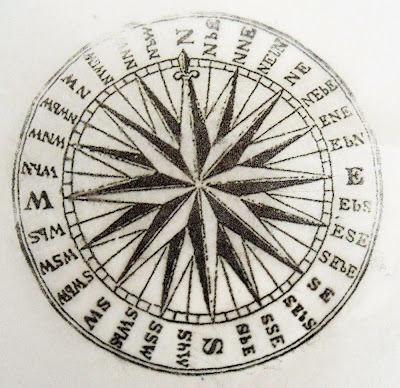
I'm taking part in yet another WOYWW desk hop today. In case you're wondering what it's all about, just follow this link to the
Stamping Ground. This is what my desk looked like on Tuesday afternoon. Let's just say it's a bit "busy" shall we?
I've been experimenting with
CitraSolv for the past few days. It's a natural cleaning agent made from oranges, but make no mistake, this stuff is strong! Apart from being a powerful de-greaser, CitraSolv is also known to have some properties that dissolve certain types of ink, making it suitable for mixed media applications.
Altering magazine pages with CitraSolv
One of the properties that makes CitraSolv suitable for mixed media applications is its ability to alter magazine pages. You just sprinkle some CitraSolv on the pages of a magazine and watch the ink dissolve into interesting patterns. Be warned though, this is an extremely messy process and the ink will stain your work surface, so make sure you protect it. You're also advised to wear gloves and work in a well-ventillated area, preferably with the windows open or better still, outdoors. The best magazine to alter seems to be the National Georgaphic due to the type of ink they use, but it will also work with some other magazines or even some junk mail.
I've altered a National Geographic and used up half a bottle of CitraSolv in the process! I've achieved some interesting results, but I don't think I'll be using this technique again any time soon as I don't think it's very cost effective considering the price of CitraSolv. The pages I've made will keep me going for a while. You can choose to alter the images beyond recognition or just distress them slightly. Let me show you some of my examples below.
 |
| Some of my altered National Geographic pages |
 |
| A photo of a couple of fishermen slightly altered |
 |
| A photo of a puffin slightly distressed - CitraSolv made it look almost translucent |
 |
| A magazine page distressed beyond recognition |
Image Transfer with CitraSolv
You can also use CitraSolv to do image transfers. I'm actually very excited about this possibility, as I've tried numerous image transfer methods before, but none worked as well as CitraSolv. You literally get a perfect result every time!
In order to do an image transfer with CitraSolv, you need to use a toner-based image. This could be a print from a laser jet printer or a photocopy. I don't think this technique would work with an inkjet printer, but you can always try!
You can only transfer an image with CitraSolv to a porous surface. Copy paper, watercolour paper, regular cardstock, chipboard, the rough side of tissue paper, kitchen towels, napkins, rice paper, wood, MDF, textile all work very well. However, you won't be able to do a successful transfer onto non-porous surfaces like acrylics (including any surface with acrylic or gel medium layers), wax paper (including deli paper), vellum, glossy papers. etc.
The easiest way to transfer an image is to place it face down on your substrate, Soak a piece of cotton wool with CitraSolv, saturate the back of your print and then burnish with a spoon or bone folder. This is a very forgiving technique. You can go over the same area several times, adding more CitraSolv if necessary, just make sure your image doesn't move.
Here are a few of my image transfers using CitraSolv:
 |
| Kitchen towel transfer |
 |
| Rice paper transfer |
 |
| Textile transfer |
 |
| MDF transfer |
 |
| Tissue paper transfer |
 |
| Transfer onto chipboard |
 |
| A transfer of my own artwork onto a piece of kitchen towel. It gives your images a soft look. |
And finally, here's a quick journal page I've made using an altered NatGeo page and some image transfers.












 I'm taking part in yet another WOYWW desk hop today. In case you're wondering what it's all about, just follow this link to the
I'm taking part in yet another WOYWW desk hop today. In case you're wondering what it's all about, just follow this link to the 

No comments:
Post a Comment
I would love to hear from you. Please leave a comment below.